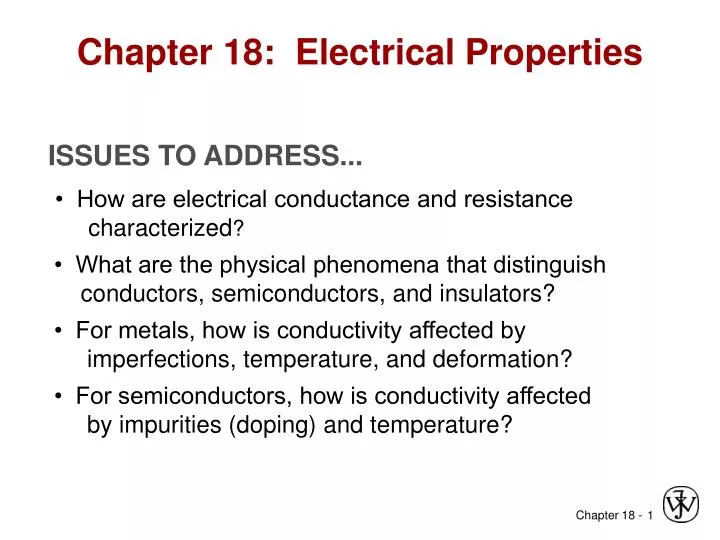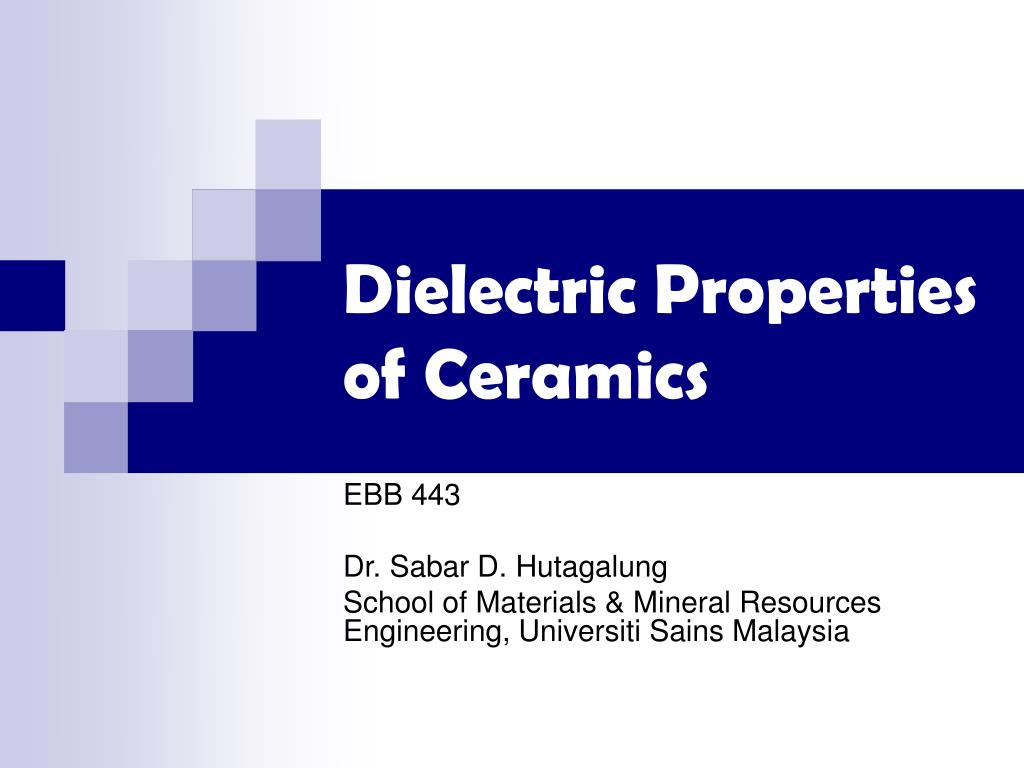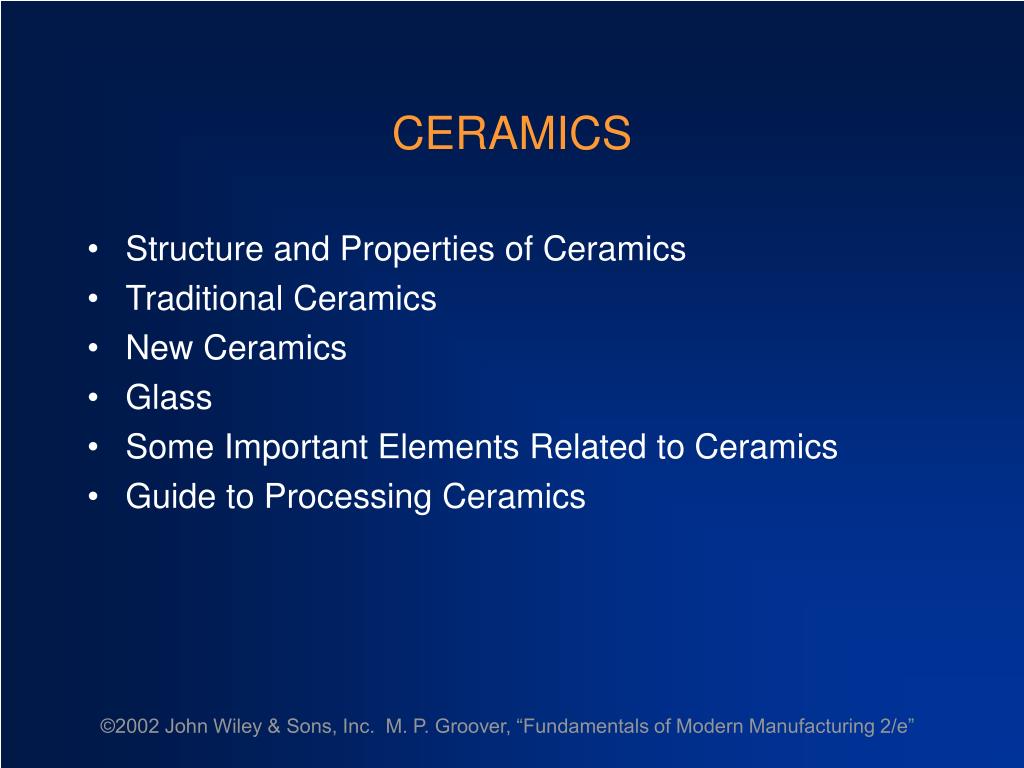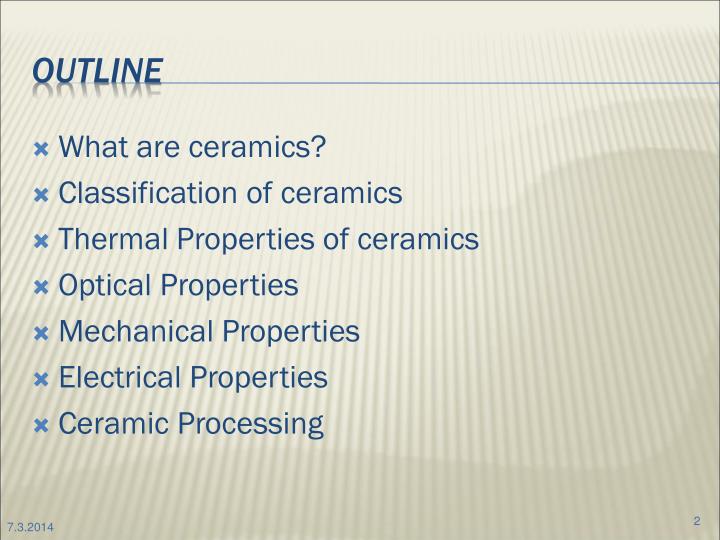6 advanced ceramics advanced ceramic materials have been developed over the past half century include industrial inorganic chemicals i e artificial raw materials that exhibit specialized properties require more sophisticated processing.
Electrical properties of ceramics ppt.
Electrical conductivity is ability of material to conduct electric current.
Engine applications are very common for this class of material which includes silicon nitride si3n4.
Gains will be driven by the development of new applications for advanced ceramics and by their increased adoption in already established applications based on superior performance and material properties.
Dielectric ceramics are capable of storing large amounts of electrical charge in relatively small volumes.
Ceramics are intermediate in density.
Semiconductor ceramics can also be developed to conduct electricity depending upon the voltage applied and their temperature.
Electrical conductivity insulator or semi conductor tic 7 3190 mgo 9 2800 zro2 10 2700 al2o3 8 2050 zno 6 1975 tio2 7 1840 sio2 crist 12 1710 fe2o3 9 1560 caf2 20 1330 pbs 20 1120 nacl 40 800 cscl 54 ppm c 646 c ceramic lcte tm mass properties include things like density.
Most of ceramic materials are dielectric materials having very low electric conductivity but supporting electrostatic field.
Dielectric materials can be solids liquids or gases.
Some ceramics cubic boron nitride are good conductors of electricity.
To finalize the material for an engineering product application we should have the knowledge of electrical properties of materials.
The properties of ceramics however also depend on their microstructure.
The electrical properties of a material are those which determine ability of material to be suitable for a particular electrical engineering application.
A ceramic coating is a sort of finished appearance of a vehicles exterior.
These materials show a distinctive spectrum of mechanical electrical thermal and biological chemical properties.
Is an electrical insulator that can be polarized by an applied electric field.
Some of the typical electrical properties of engineering.
Sometimes even monocrystalline materials such as diamond and sapphire are erroneously included under the term ceramics.
Ceramics are generally bad conductors.
Advanced ceramics demand for advanced ceramics in the us is forecast to rise more than five percent annually to 13 5 billion in 2017.
But fine ceramics and porcelain are insulators that do not conduct electricity.
High performance ceramics are always used in circumstances where other materials such as plastic or metal cannot resist the exceptionally heavy loads.
Ceramics are by definition natural or synthetic inorganic non metallic polycrystalline materials.





























